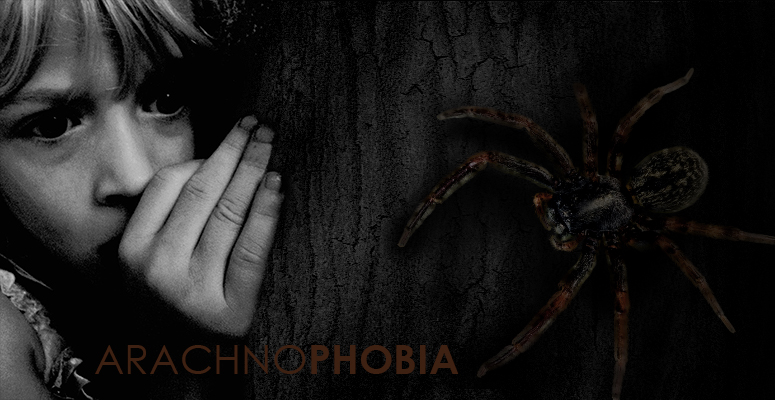Spiders and Spiderman might have got a trend among young people these days but many others have an unexplainable rush of fear whenever these creepy hairy spiders appear in front of them. If you’re unnecessarily afraid of spiders, then you might have Arachnophobia.
Arachnophobia is a word derived from Greek word “arachno” which means spider. Arachnophobia is signified by irrelevant and irrational fear of spiders. This is one of the most common animal/insect phobias seen in people. The fear may reach to the extent that the person avoids any place or activity where he/she anticipates seeing spiders. The person may even have no guts to see a picture of spider in severe cases of arachnophobia. If spiders have been reappearing at home, the person may even avoid home to get rid of the fear.

How Common is Arachnophobia?
Arachnophobia is very much common in people and has been ranked as the third worst phobia that people suffer from. At least 3.5% – 6.1% of the population is likely to have arachnophobia. 30.5% of the population of the U.S suffer from arachnophobia. Among those having arachnophobia, women are in greater number. Studies show that 2 percent among those seek help from expert for treatment.
What Causes Arachnophobia?
There are various viewpoints on how arachnophobia is generated. Some strong causes known to bring arachnophobia in people are:
Evolutionary factors
Experts have associated evolutionary happenings with the development of arachnophobia in most people. The wide presence of venomous and dangerous spiders since the early time period lead to the development of arachnophobia in people. Our ancestors have said to use the fear as a way of survival against those harmful spiders. This has been passed as an inherited trait since those early times.
Cultural factors
Arachnophobia can also be associated with cultural beliefs. Some culture believes spiders to be extremely harmful and dangerous like in Africa. This can also contribute in developing arachnophobia in people.
Traumatic Experience
Any situation or trauma that has been involved with or around spiders such as a spider bite or an accident in place with spiders previously may also develop arachnophobia. The phobia may also appear if the person witness someone else experiencing or getting harmed by spiders.
What Are The Symptoms of Arachnophobia?
The symptoms that may commonly occur with people having arachnophobia are:
- Unexplainable and constant fear of spiders ( Even the thought of seeing a spider can provoke the person to panic)
- Irrelevant alertness associated with spiders. The person may be obsessed with checking if there are spiders before going anywhere.
- Avoidance of places where spiders can be commonly found such as caves, museums, forests or old buildings
- Avoidance of any activity where he/she anticipates to find spiders like hiking or camping
- Avoiding the previous place where any incident with spiders might have occurred. The person can even avoid home in such situation.
- Panic attacks may be accompanied by physical symptoms of dizziness and fainting, trembling, sweating, abdominal pain, nausea and vomiting and racing heartbeat
When to Visit a Doctor?
If the above symptoms have been occurring for more than six months to the severity that the person’s daily life has been disrupted, then one needs to immediately consult with a doctor. However, if you’re fearful about spiders but the fear has not created any kind of disturbance in your daily life, then you do not require visiting a doctor.
How is Arachnophobia Treated?
Some treatment ways that are effective in controlling arachnophobia in people are:
System Desensitization
This is one of the most common and effective therapies used for controlling fear in a person. The therapist assesses the level of fear of spiders in a person and teaches different relaxation techniques such as breathing control, meditation and muscle control. Then the person is exposed to conditions or imaginations of spiders and taught to use the relaxation techniques at the same time. The major aim is to process reduction of fear and panicking when the person is confronted with situations involving spiders.
Cognitive Behavioral therapy (CBT)
CBT also goes hand in hand with system desensitization. The person receives effective counseling sessions with the therapist who would dig out the roots of the fear in the person, and makes him aware of the situation. The major aim of CBT is to modify all the negative images associated with spiders into more positive and tolerable images.
Medications
As in different phobias, medications can also be used alongside other therapies. Anti-anxiety and anti-depressant medicines are generally used to take the symptoms in control depending on the severity of the case.